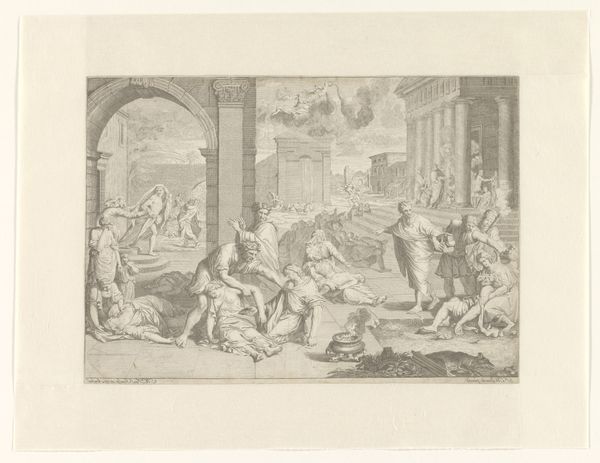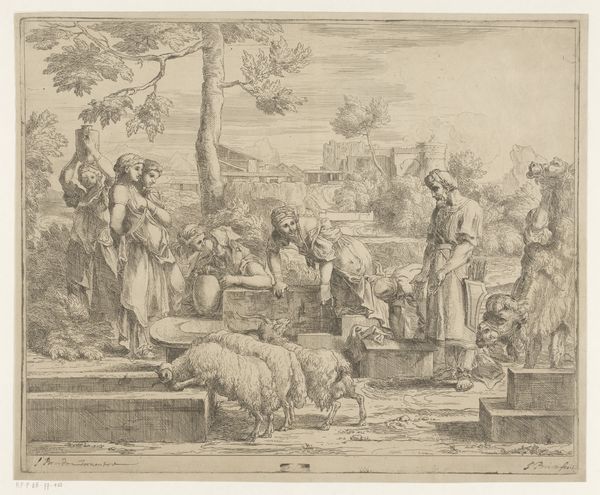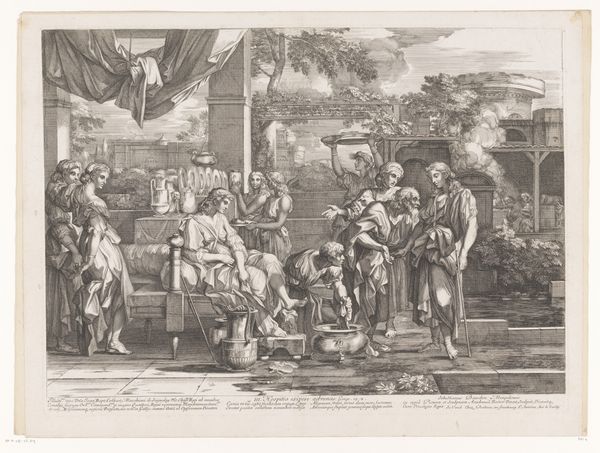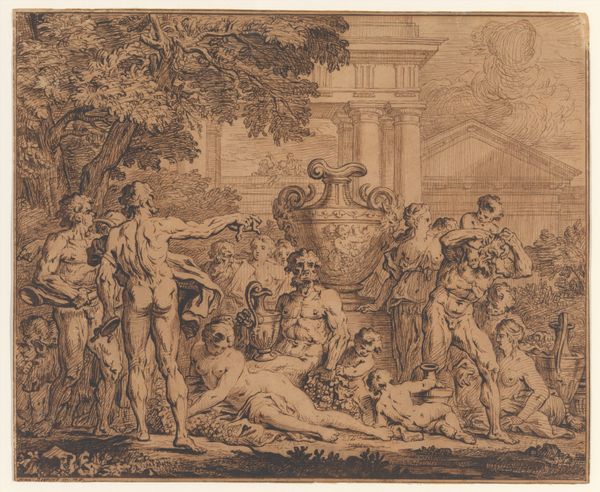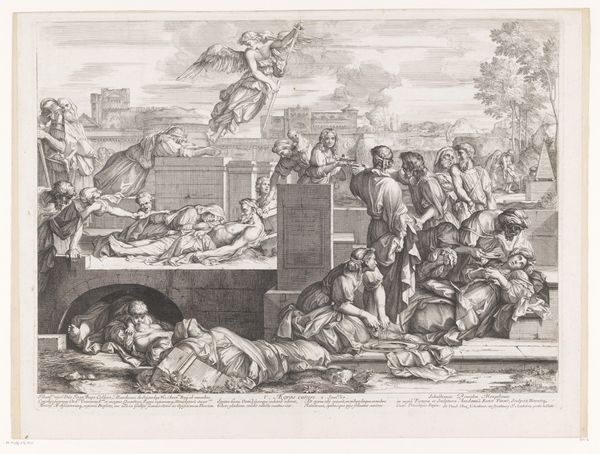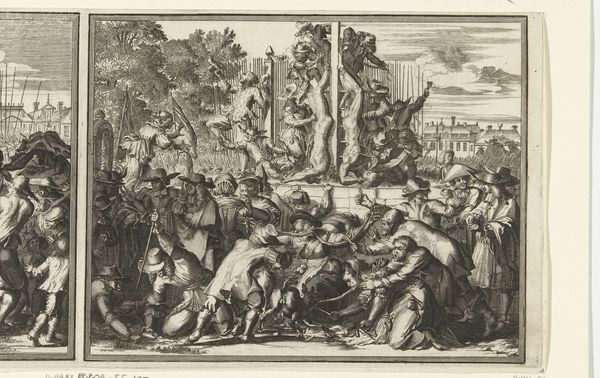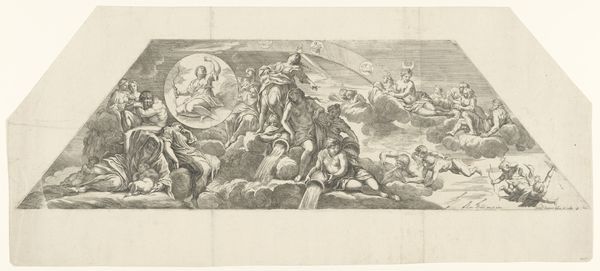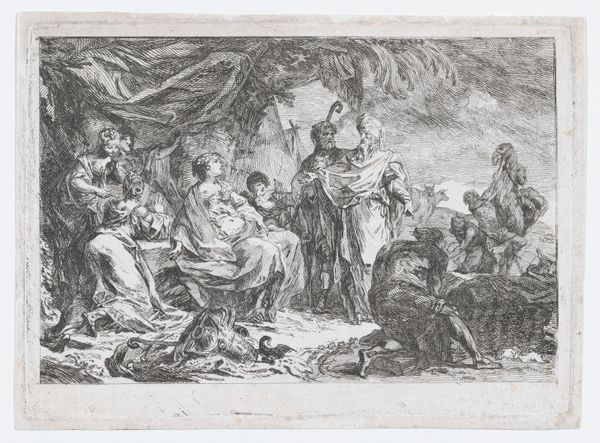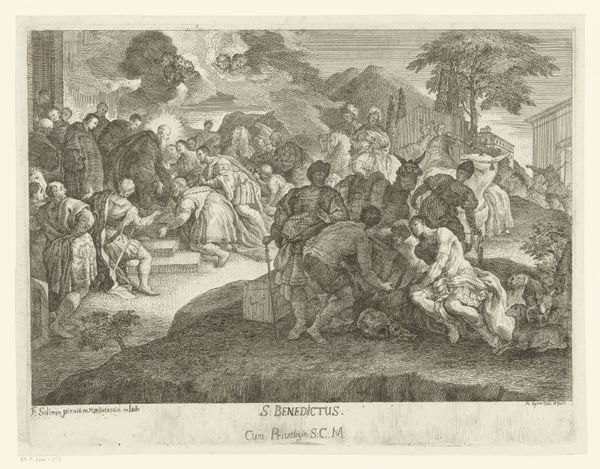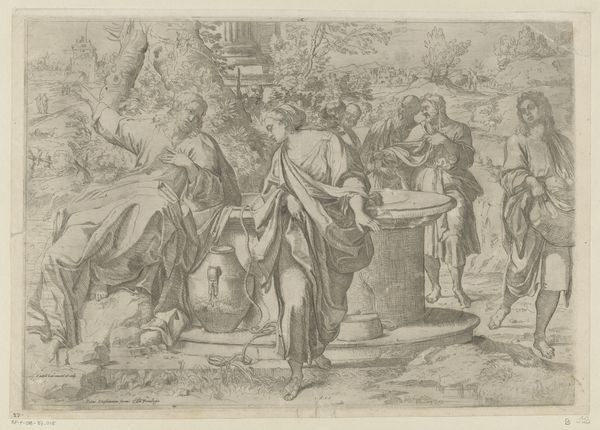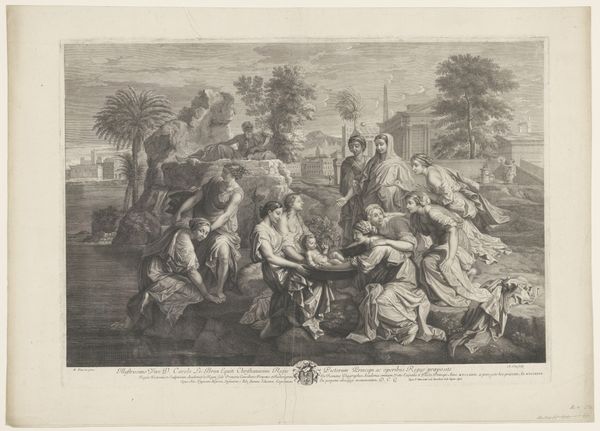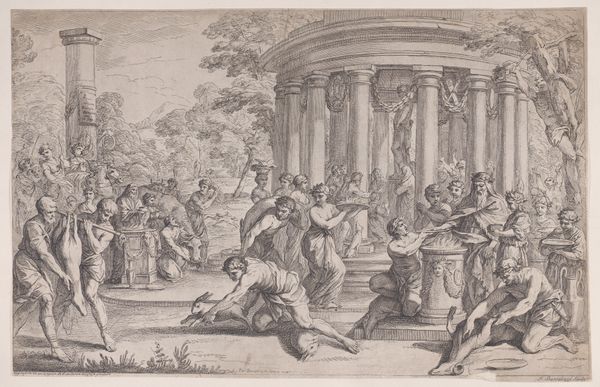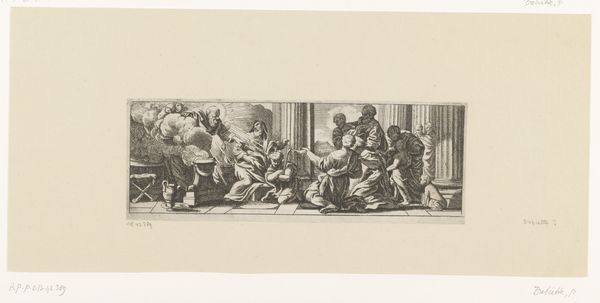
print, engraving
#
narrative-art
#
baroque
# print
#
old engraving style
#
figuration
#
pencil drawing
#
history-painting
#
engraving
Dimensions: height 433 mm, width 581 mm
Copyright: Rijks Museum: Open Domain
Curator: This engraving is called "Laven van de dorstigen," attributed to Sebastien Bourdon and possibly dating from 1626 to 1671. It’s currently held in the Rijksmuseum. The rendering, executed through engraving, captures an intensely dramatic and rather bleak scene. Editor: Indeed. Immediately, I'm struck by the composition, the crowding, and how much emphasis is put on this sort of rough-hewn materiality: jugs, rocky surfaces, course fabrics. The tonal range is amazing given the print medium. Curator: Bourdon uses dense hatching to create shadow and volume, notice how this gives depth to the forms, from the figures clustered around the well to the background architecture, establishing a clear hierarchy through sharp light contrast. Editor: The making of it is central to its meaning. This would have required physical labor and specialized skills – the engraver as a mediator, painstakingly translating an original design. What sort of economic models of production does this engraving participate in? Are we able to learn more about the labour process behind Bourdon's prints? Curator: These visual cues serve to emphasize the historical gravity embedded within the print. Note the classically inspired architectural structure situated in the background, and the Roman-attired figures at the scene’s upper left. Semiotically, how does that juxtaposition speak to a narrative tradition, echoing historical painting conventions in print form? Editor: Precisely. How much did the cost to produce influence the subject matter chosen, the audience targeted, or distribution of the images themselves? Let's think, also, about the act of collecting water here. Its materiality speaks of fundamental human needs, scarcity and communal resources, wouldn’t you say? Curator: Definitely. And considered formally, this reinforces the work's focus on thirst and salvation. The spatial composition channels our gaze directly toward the act of quenching thirst. From this perspectival vantage point, we see it all—a singular moment lifted from the story and presented for observation. Editor: Absolutely. Considering Bourdon’s print beyond its visual properties makes the engraving more vibrant, less static. This act reveals something beyond form—its grounding in real, material circumstances. Curator: In sum, the careful arrangement of this composition and use of engraving highlights both historical consciousness, while echoing themes found throughout other painting. Editor: I completely agree! Seeing this artwork more closely allows us to understand more broadly the lives and hands that shaped them.
Comments
No comments
Be the first to comment and join the conversation on the ultimate creative platform.
